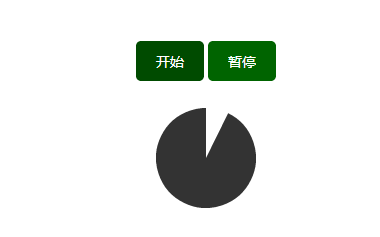java定时器在web中的应用还是颇为广泛的,比如我们玩的qq农场等等典型的例子,下面就是一个后台应用程序和web后台程序的两个例子

(1) 后台程序
package com.test;
import java.io.IOException;
import java.util.Timer;
/**
* 定时器类Timer在java.util包中。使用时,先实例化,然后使用实例的schedule(TimerTask task, long delay)方法,
* 设定指定的任务task在指定的延迟delay后执行。定时器任务类TimerTask是抽象类,继承并重写其run()方法,可实现具体任务。
* schedule(TimerTask task, Date time)设定指定任务task在指定时间time执行。 cancel()方法结束这个定时器。
* schedule(TimerTask task, long delay, long
* period)方法设定指定任务task在指定延迟delay后进行固定延迟peroid的执行。 scheduleAtFixedRate(TimerTask
* task, long delay, long period)方法设定指定任务task在指定延迟delay后进行固定频率peroid的执行。
* 要实现一个定时任务
* ,运用java中的Timer和TimerTask类可以非常容易实现实时调用处理函数。这两个类使用起来非常方便,可以完成我们对定时器的绝大多数需要。
*/
public class TimerTest {
public static void main(String[] args) {
// 定义一个定时器
Timer timer = new Timer();
// 在1秒后执行任务,每次间隔2秒,如果传递一个Date的参数,就可以在某个固定的时间执行这个任务
timer.schedule(new MyTask(), 1000, 2000);
System.out.println("___进入 while ___");
while (true) {
try {
System.out.println("c" + 'c');
int ch = System.in.read();
System.out.println("ch: " + ch);
if (ch - 'c' == 0) {
timer.cancel(); // 退出任务
}
} catch (IOException e) {
e.printStackTrace();
}
}
}
/**
* TimerTask必须继承run()方法
*/
static class MyTask extends java.util.TimerTask {
@Override
public void run() {
System.out.println("********** 进入run()方法 ***********");
}
}
}
执行效果:
___进入 while ___
cc
********** 进入run()方法 ***********
********** 进入run()方法 ***********
********** 进入run()方法 ***********
********** 进入run()方法 ***********
cc
********** 进入run()方法 ***********
********** 进入run()方法 ***********
********** 进入run()方法 ***********
********** 进入run()方法 ***********
..........
(2)Web程序调用,每次到12点时候就记录到一个文本信息中
定义类:SetTimerExecute
package com.test;
import java.io.BufferedWriter;
import java.io.File;
import java.io.FileWriter;
import java.util.Date;
import java.util.Timer;
import java.util.TimerTask;
import javax.servlet.ServletContextEvent;
import javax.servlet.ServletContextListener;
/**
* web定时器
* 继承TimerTask抽象类,必须重写contextDestroyed(销毁),contextInitialized(初始化),run(执行)方法
* 实现ServletContextListener接口
*/
public class SetTimerExecute extends TimerTask implements ServletContextListener {
@Override
public void contextDestroyed(ServletContextEvent sce) {
System.out.println("******** 服务器停止 ******");
}
@Override
public void contextInitialized(ServletContextEvent sce) {
System.out.println("******** 服务器启动 ******");
// 新建一个时间控件
Timer timer = new Timer();
timer.schedule(new SetTimerExecute(), 1000, 1000);
}
@Override
public void run() {
FileWriter fw = null; // 创建文件流
BufferedWriter buf = null;
try {
File file = new File("/test.txt");
if (!file.exists())
file.createNewFile(); // 创建文件
fw = new FileWriter(file, true); // 是否在后面进行追加内容,如果为true的话进行追加内容
buf = new BufferedWriter(fw);
Date day = new Date();
System.out.println("现在时刻:" + day.getHours());
// 每天上午10点写入到文件
if (day.getHours() == 12) {
System.out.println("等于12点");
fw.write("现在时刻,北京时间:" + day.getHours() + "点 " + day.getMinutes() + "分 " + day.getSeconds() + " 秒");
buf.newLine(); // 追加一行
}
} catch (Exception e) {
e.printStackTrace();
} finally {
try {
if (buf != null) {
buf.flush(); // 把缓冲区的数据强行输出
}
if (fw != null) {
fw.close(); // 关闭流
}
} catch (Exception e2) {
e2.printStackTrace();
}
}
}
}
配置web.xml文件
<?xml version="1.0" encoding="UTF-8"?> <web-app version="3.0" xmlns="http://java.sun.com/xml/ns/javaee" xmlns:xsi="http://www.w3.org/2001/XMLSchema-instance" xsi:schemaLocation="http://java.sun.com/xml/ns/javaee http://java.sun.com/xml/ns/javaee/web-app_3_0.xsd"> <display-name></display-name> <welcome-file-list> <welcome-file>index.jsp</welcome-file> </welcome-file-list> <listener> <listener-class>com.test.SetTimerExecute</listener-class> </listener> </web-app>
运行时会在你运行环境的根目录下创建一个text的文本文件,没到12点就往这个文件中添加时间








